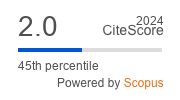Experiencing emotions in design thinking: How positive and negative affects play their part in the innovation process
DOI:
https://doi.org/10.23726/cij.2022.1322Keywords:
Team based innovation; Emotions in innovation; Design Thinking; Design processAbstract
Emotions have been recently recognized to have a significant impact on the innovation process and its outcomes. However, little is known regarding how teams are experiencing distinct emotions throughout the varying stages of the innovation process. This study analyzes design thinking teams' self-reported emotional states and explores the emotional spectrum associated with various innovation activities. The Geneva Emotion Wheel instrument is used to map relations between 20 emotions and nine generic innovation activities that occurred during a two-week project.
References
Amabile, T. M., Barsade, S. G., Mueller, J. S., & Staw, B. M. (2005). Affect and creativity at work. Administrative science quarterly, 50(3), 367-403.
Clarke, N. (2010). Emotional intelligence and its relationship to transformational leadership and key project manager competences. Project management journal, 41(2), 5-20.
Coyne, A. K., Murtagh, A., & McGinn, C. (2020, March). Using the Geneva emotion wheel to measure perceived affect in human-robot interaction. In Proceedings of the 2020 ACM/IEEE International Conference on HumanRobot Interaction (pp. 491-498).
Dam, R., & Siang, T. (2018). What is design thinking and why is it so popular. Interaction Design Foundation.
De Dreu, C. K. & Weingart, L. R. (2002, August). Task versus relationship conflict: a meta-analysis. In Academy of Management Proceedings Vol. 2002, No. 1, pp. B1-B6. Briarcliff Manor, NY 10510: Academy of Management.
Desmet, P. M., & Hekkert, P. (2009). Special issue editorial: Design & emotion. International Journal of Design, 3(2).
Design Council. (2007). Eleven lessons: Managing design in eleven global companies-desk research report. Design Council UK. Experiencing emotions in design thinking: how positive and negative affects play their part in the innovation process
Fredrickson, B. L. (2001). The role of positive emotions in positive psychology: The broaden-and-build theory of positive emotions. American psychologist, 56(3), 218.
Lindberg, T., Gumienny, R., Jobst, B., & Meinel, C. (2010). Is there a need for a design thinking process. In Design thinking research symposium. Vol. 8, pp. 243-254.
Madjar, N., Oldham, G. R., & Pratt, M. G. (2002). There's no place like home? The contributions of work and nonwork creativity support to employees' creative performance. Academy of Management journal, 45(4), 757-767.
McColl-Kennedy, J. R., & Anderson, R. D. (2002). Impact of leadership style and emotions on subordinate performance. The leadership quarterly, 13(5), 545-559.
Meinel, C., & Leifer, L. (2012). Design thinking research. In Design thinking research: pp. 1-11. Springer, Berlin, Heidelberg.
Meiselman, H. L. (2015). A review of the current state of emotion research in product development. Food Research International, 76, 192-199.
Nolte, H., & McComb, C. (2021). The cognitive experience of engineering design: an examination of first-year student stress across principal activities of the engineering design process. Design Science, 7.
Peslak, A. R. (2005). Emotions and team projects and processes. Team Performance Management. Vol. 11 No. 7/8, pp. 251-262.
Pillay, N., Park, G., Kim, Y. K., & Lee, S. (2020). Thanks for your ideas: Gratitude and team creativity. Organizational Behavior and Human Decision Processes, 156, 69-81.
Rank, J., & Frese, M. (2008). The impact of emotions, moods, and other affect-related variables on creativity, innovation and initiative. In N. M. Ashkanasy & C. L. Cooper (Eds.), Research companion to emotions in organizations: pp. 103-119. Cheltenham, UK: Edward Elgar Publishing.
Scherer, K. R. (2005). What are emotions? And how can they be measured? Social science information, 44(4), 695-729.
Scherer, K. R., Shuman, V., Fontaine, J., & Soriano, C. (2013). The GRID meets the Wheel: Assessing emotional feeling via self-report. Components of emotional meaning: A sourcebook. Oxford University Press.
Sy, T., Côté, S., & Saavedra, R. (2005). The contagious leader: impact of the leader's mood on the mood of group members, group affective tone, and group processes. Journal of applied psychology, 90(2), 295.
Tran, V. (2004) The influence of emotions on decisionmaking processes in management teams. Doctoral thesis, University of Geneva.
Utriainen, T. (2017). Perceived difficulty of design thinking activities in co-located and remote environments. CERN IdeaSquare Journal of Experimental Innovation, 1(1), 2121.
Vuori, T. O., & Huy, Q. N. (2016). Distributed attention and shared emotions in the innovation process: How Nokia lost the smartphone battle. Administrative Science Quarterly, 61(1), 9-51.
Zietsma, C., & Toubiana, M. (2019). Emotions as the glue, the fuel and the rust of social innovation. Handbook of Inclusive Innovation. Pinter Publisher: London, UK, pp. 256-281.
Downloads
Additional Files
Published
How to Cite
License
Copyright (c) 2022 Tuuli Utriainen, Laura Valtonen

This work is licensed under a Creative Commons Attribution 4.0 International License.
Authors who publish with this journal agree to the following terms:
- Authors retain copyright and grant the journal right of first publication with the work simultaneously licensed under a Creative Commons Attribution License that allows others to share the work with an acknowledgement of the work's authorship and initial publication in this journal.
- Authors are able to enter into separate, additional contractual arrangements for the non-exclusive distribution of the journal's published version of the work (e.g., post it to an institutional repository or publish it in a book), with an acknowledgement of its initial publication in this journal.
- Authors are permitted and encouraged to post their work online (e.g., in institutional repositories or on their website) prior to and during the submission process, as it can lead to productive exchanges, as well as earlier and greater citation of published work (See The Effect of Open Access).


